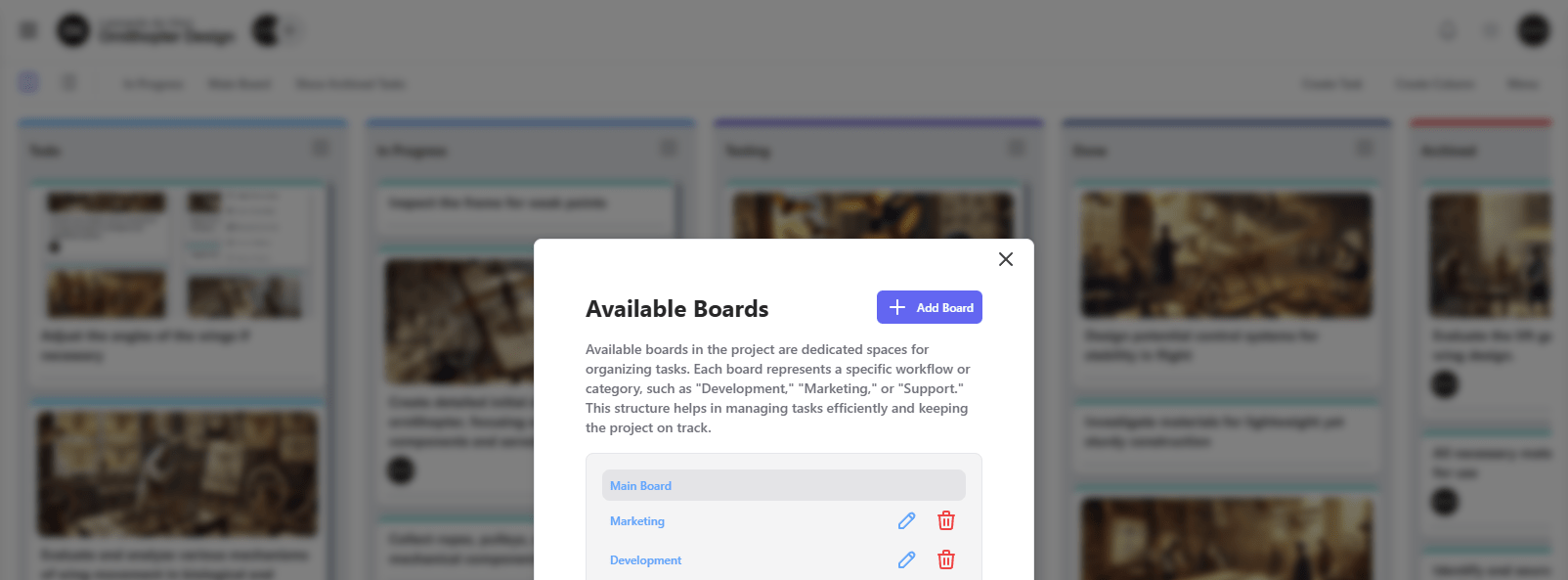GitScrum Multiple Projects Boards
Managing Multiple Projects with Multiple Boards
GitScrum's Multiple Projects Boards feature allows you to create dedicated spaces for organizing tasks based on specific workflows or categories. Each board represents a distinct aspect of your project, such as "Development," "Marketing," or "Support." This structure helps teams manage tasks more efficiently, maintain clarity, and keep the project on track without cluttering a single board with too many unrelated tasks.

Even though each board is tailored to a specific focus, all boards within the project can share the same columns and workflow (e.g., Todo , In Progress , Testing , Done ). This consistency ensures that team members follow a uniform process across all boards while still benefiting from the separation of concerns.
